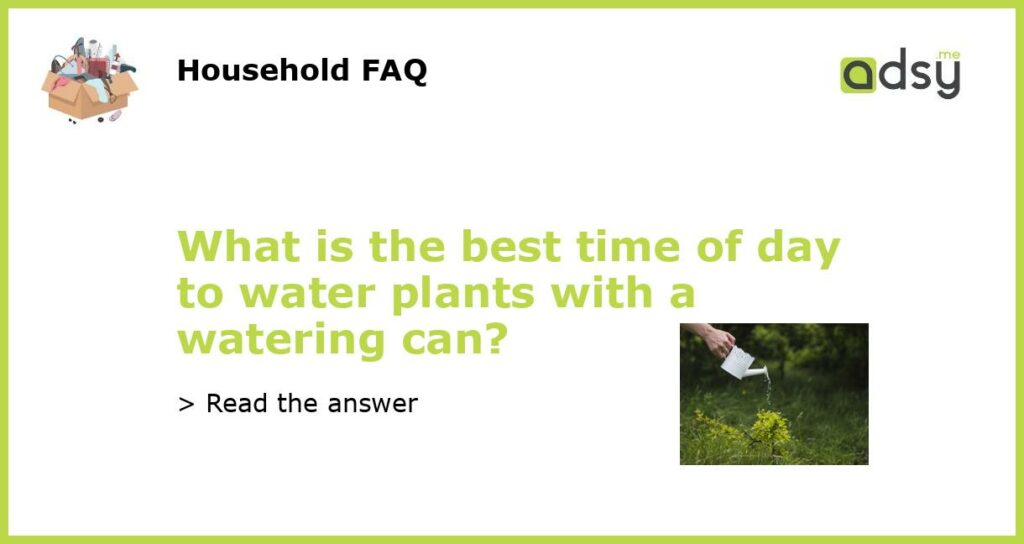Introduction
Watering plants is an essential task for any gardener, as it ensures that plants receive the moisture they need to grow and thrive. However, knowing the best time of day to water plants with a watering can can greatly impact the success of your gardening efforts. In this article, we will explore the different factors to consider when determining the optimal time for watering, and discuss why certain times of day are more effective than others.
Factors to Consider
When deciding on the best time to water your plants with a watering can, there are several factors to take into account:
- Temperature: The temperature of the surrounding environment can affect the absorption of water by the plants. Extreme heat can cause water to evaporate quickly, while cooler temperatures allow for better water uptake.
- Sunlight: Sunlight can cause water to evaporate faster, especially during the hottest parts of the day. Watering during these times may result in less water reaching the plant’s roots.
- Plant type: Different plants have different water requirements. Some plants prefer moist soil, while others can tolerate drier conditions. Understanding the specific needs of your plants is crucial in determining the best watering schedule.
- Soil type: The type of soil in your garden can also impact watering needs. Sandy soils drain quickly, requiring more frequent watering, while clay soils retain water for longer periods.
- Time constraints: Lastly, your personal schedule and availability may influence when you can water your plants. It’s important to choose a time that works best for you and allows for consistent watering.
Best Time to Water Plants
Based on the factors mentioned above, the best time to water plants with a watering can is early morning or late afternoon. Here’s why:
- Early Morning: Watering plants in the early morning allows the foliage and soil to dry out during the day. This reduces the risk of fungal diseases, as wet foliage overnight can promote their growth. Additionally, the cooler morning temperatures mean less evaporation, ensuring that more water reaches the plant’s roots.
- Late Afternoon: The late afternoon is another ideal time for watering. By this point, the heat of the day is beginning to subside, reducing water evaporation. The plants have also had time to absorb sunlight and convert it to energy, meaning they have the fuel to take up water and nutrients more efficiently.
Avoid Watering During Midday
One time of day to avoid watering with a watering can is midday, when the sun is at its peak. Here’s why midday watering is not recommended:
- High Evaporation: Water applied during midday is more likely to evaporate before it has a chance to penetrate the soil and reach the plant’s roots. This wastage of water is both inefficient and ineffective in providing moisture to your plants.
- Foliar Damage: Water droplets left on the foliage can act as tiny magnifying glasses, intensifying the sun’s rays and potentially causing burning or damage to the leaves.
- Stress on Plants: The combination of high temperatures, direct sunlight, and water stress can put additional strain on plants, making them more susceptible to wilting and other issues.
Conclusion
When it comes to watering plants with a watering can, the best time of day is early morning or late afternoon. These times offer cooler temperatures and lower evaporation rates. Avoid watering during midday when the sun is at its peak, as it can lead to wastage of water and potential damage to the plants. Remember to consider factors such as temperature, sunlight, plant type, soil type, and your own schedule when determining the best watering schedule for your garden. By following these guidelines, you can ensure that your plants receive adequate moisture for healthy growth and minimize the risk of water-related issues.






